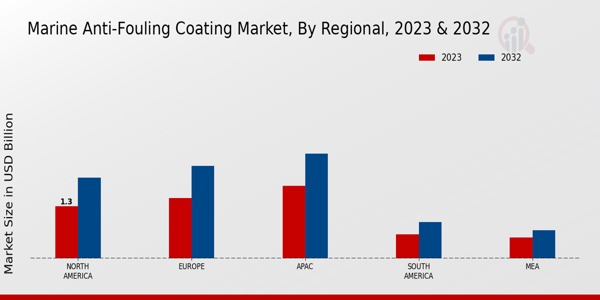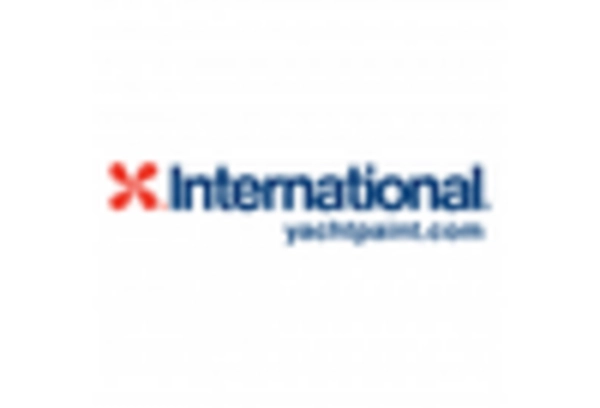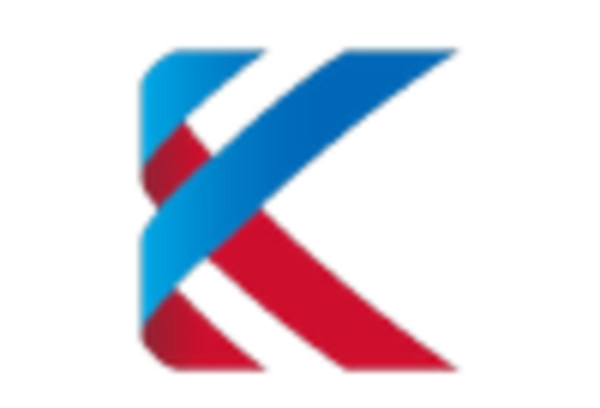Stringent Regulatory Frameworks
The Marine Anti-Fouling Coating Market is subject to stringent regulatory frameworks aimed at protecting marine ecosystems. Various international agreements and national regulations are being implemented to limit the use of harmful substances in anti-fouling coatings. Compliance with these regulations is becoming increasingly critical for manufacturers, as non-compliance can lead to significant penalties and reputational damage. This regulatory landscape is driving innovation, as companies are compelled to develop compliant products that meet environmental standards. The market is likely to see a shift towards safer, more sustainable formulations, which could reshape product offerings and influence consumer choices in the coming years.
Growing Awareness of Biofouling Impacts
The Marine Anti-Fouling Coating Market is experiencing growth due to increasing awareness of the impacts of biofouling on marine vessels and ecosystems. Biofouling can lead to reduced vessel performance, increased fuel consumption, and higher maintenance costs. As stakeholders in the maritime industry become more informed about these issues, there is a corresponding rise in demand for effective anti-fouling solutions. Educational initiatives and industry collaborations are helping to disseminate knowledge about the benefits of anti-fouling coatings. This heightened awareness is likely to drive market growth, as more vessel operators recognize the importance of investing in quality coatings to mitigate the adverse effects of biofouling.
Increasing Demand for Eco-Friendly Solutions
The Marine Anti-Fouling Coating Market is witnessing a notable shift towards eco-friendly solutions. As environmental concerns escalate, there is a growing demand for coatings that minimize ecological impact. This trend is driven by both consumer preferences and regulatory pressures aimed at reducing harmful substances in marine environments. The market for eco-friendly anti-fouling coatings is projected to grow significantly, with estimates suggesting a compound annual growth rate of over 5% in the coming years. Manufacturers are increasingly investing in research and development to create sustainable alternatives that do not compromise performance. This focus on sustainability not only aligns with The Marine Anti-Fouling Coating appeal of products that are less harmful to marine life.
Rising Maritime Trade and Shipping Activities
The Marine Anti-Fouling Coating Market is significantly influenced by the rising maritime trade and shipping activities. As global trade continues to expand, the demand for efficient and durable marine vessels increases, subsequently driving the need for effective anti-fouling solutions. The International Maritime Organization has reported a steady increase in shipping volumes, which correlates with a heightened focus on vessel maintenance and performance. This trend suggests that the market for anti-fouling coatings will experience robust growth, as ship owners seek to enhance fuel efficiency and reduce operational costs through effective fouling prevention. The interplay between shipping growth and anti-fouling technology is likely to shape the future of the industry.
Technological Innovations in Coating Formulations
Technological advancements play a pivotal role in shaping the Marine Anti-Fouling Coating Market. Innovations in coating formulations, such as the development of biocide-free options and advanced polymer technologies, are enhancing the effectiveness and longevity of anti-fouling solutions. These innovations are expected to drive market growth, as they offer improved performance and reduced maintenance costs for vessel operators. The introduction of smart coatings that respond to environmental conditions is also gaining traction, potentially revolutionizing the industry. As a result, the market is likely to see an influx of new products that cater to the evolving needs of consumers, thereby expanding the overall market landscape.


















Leave a Comment